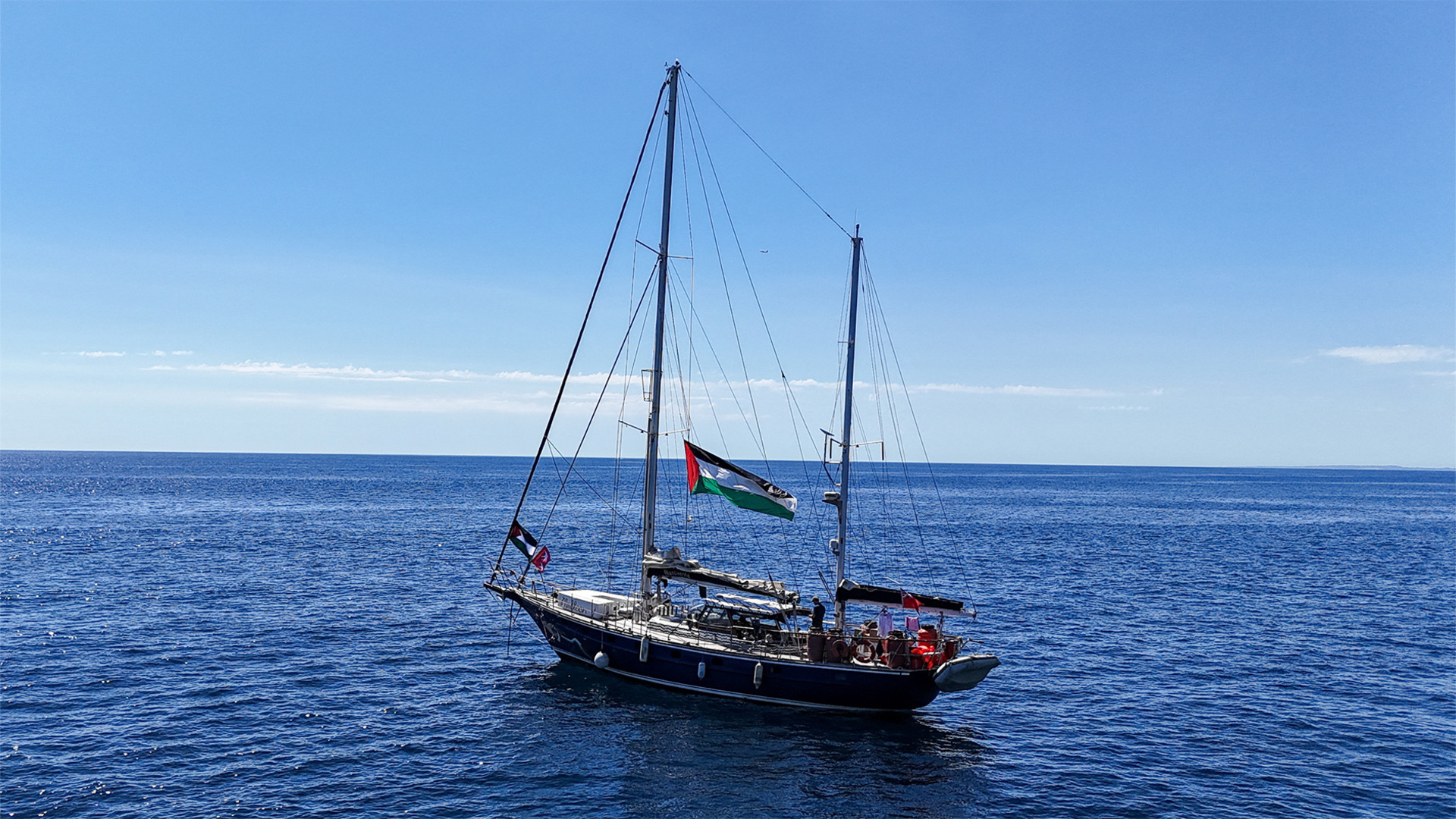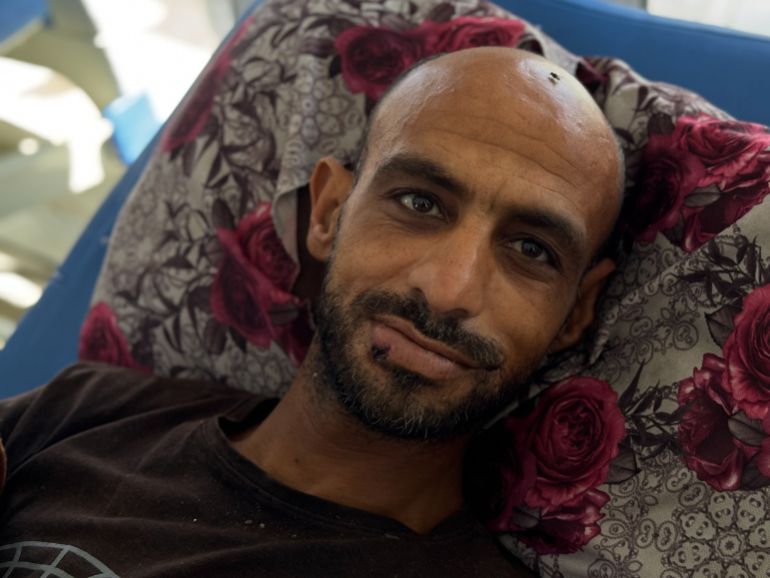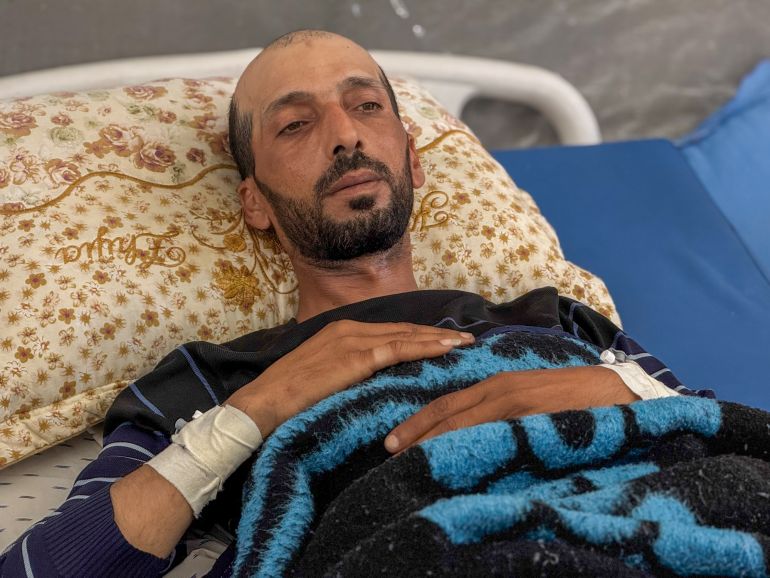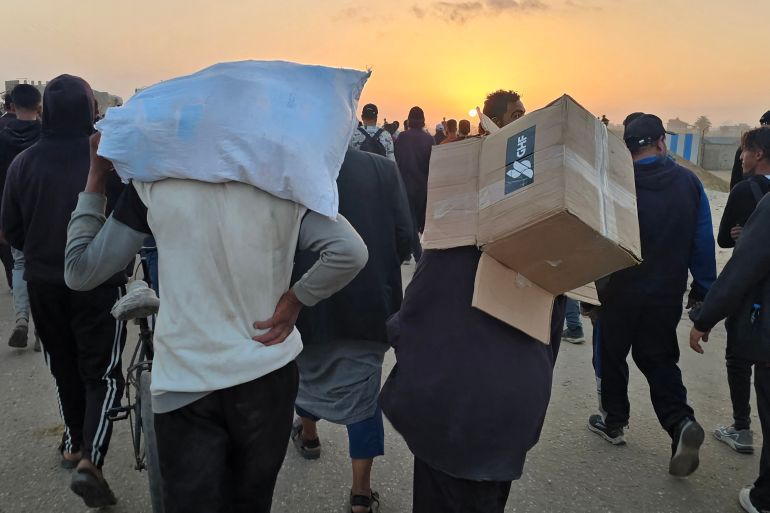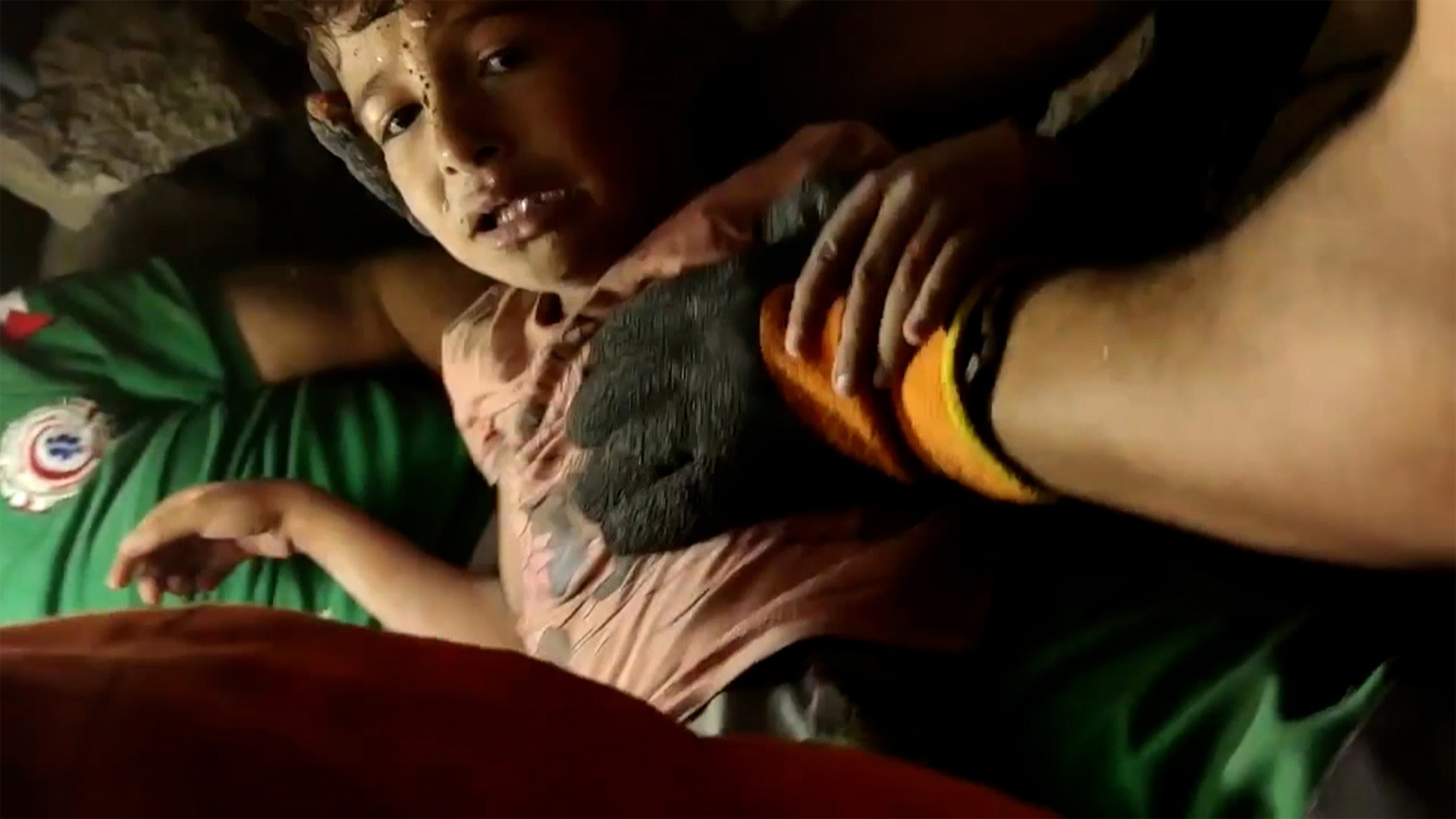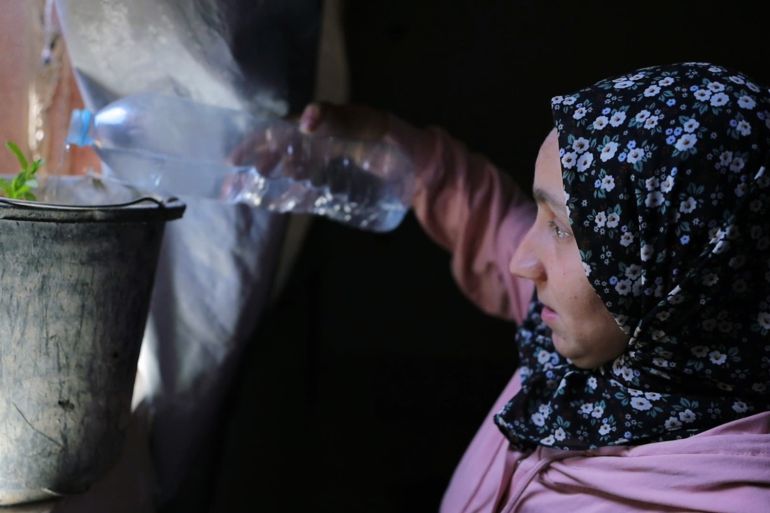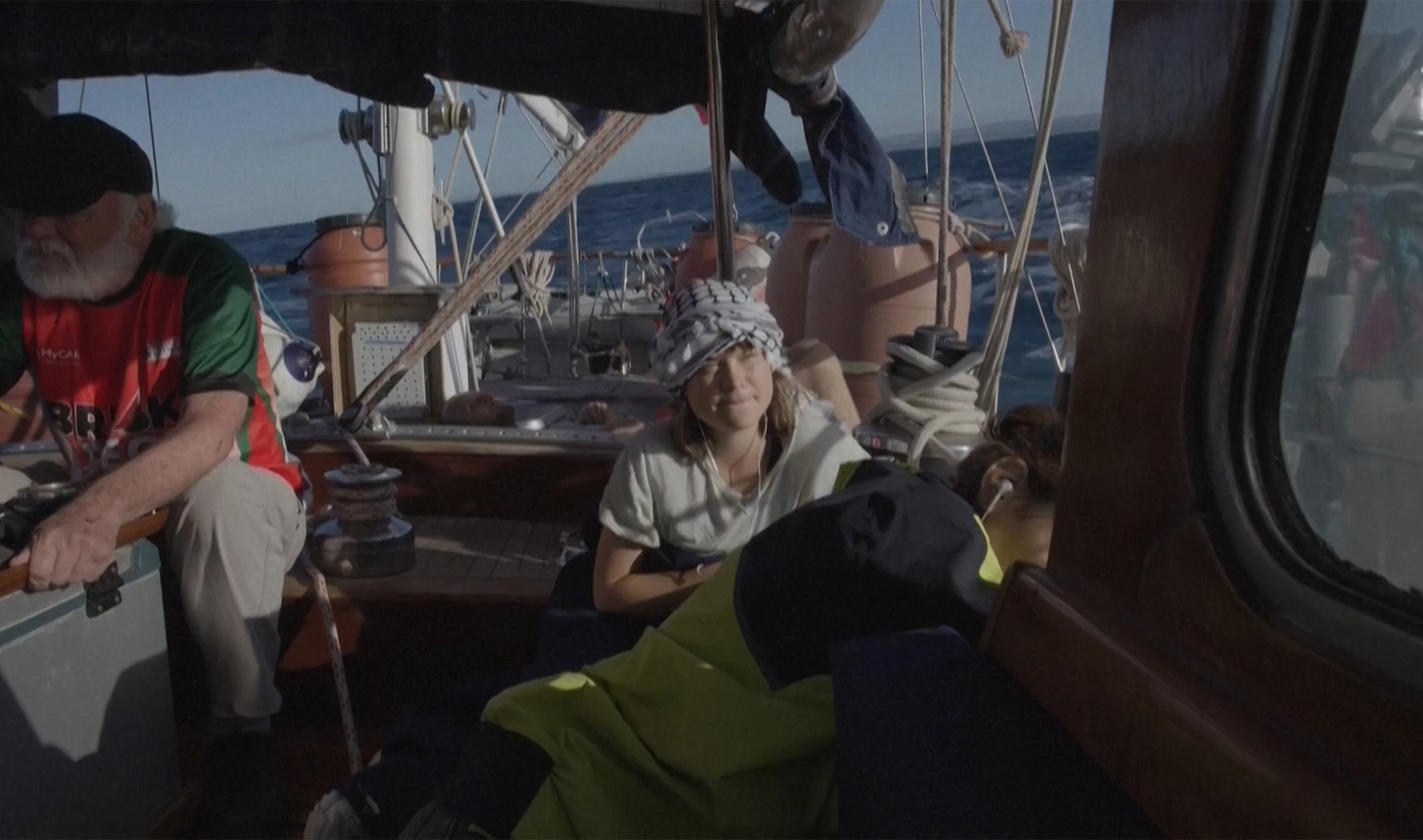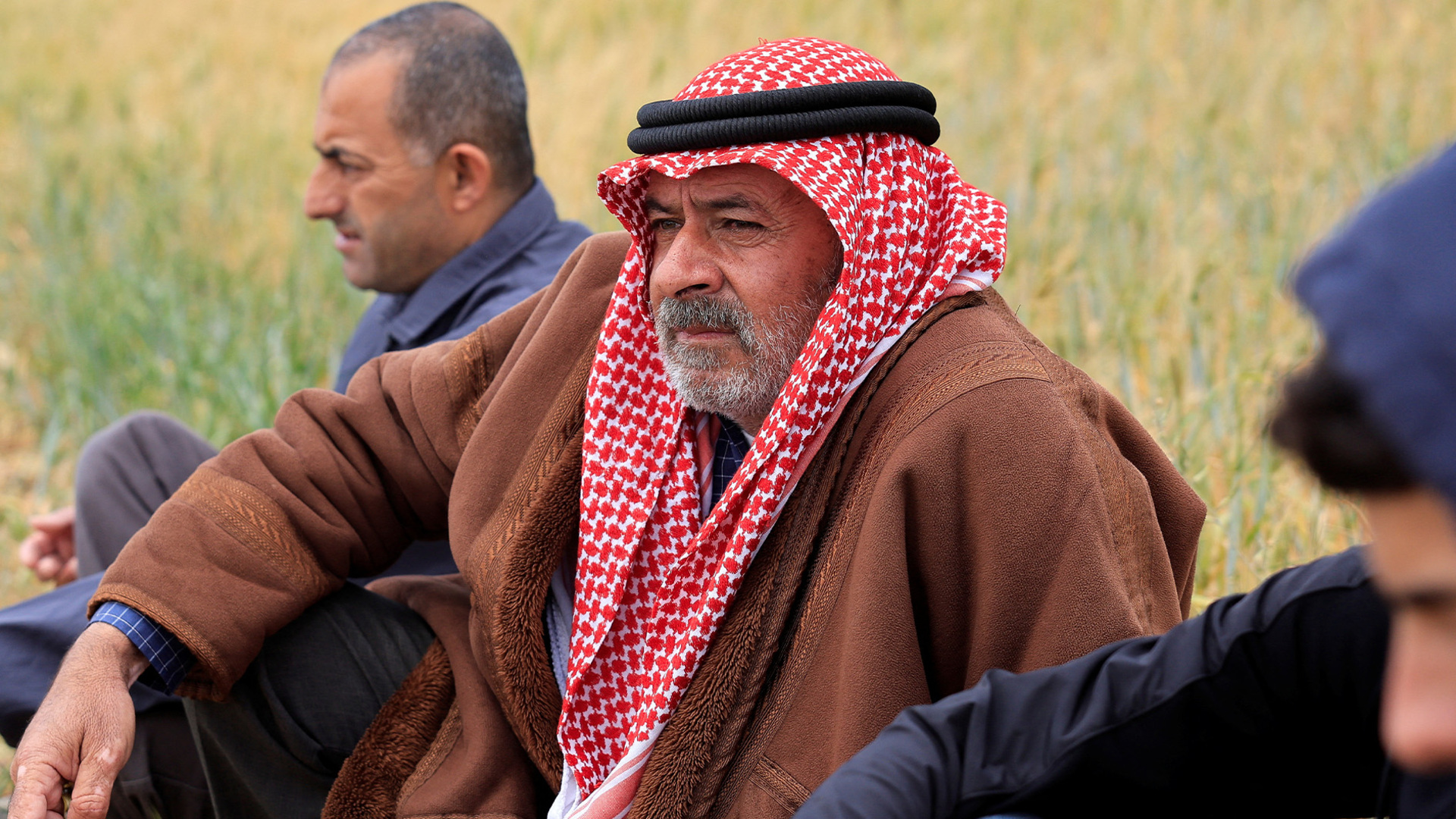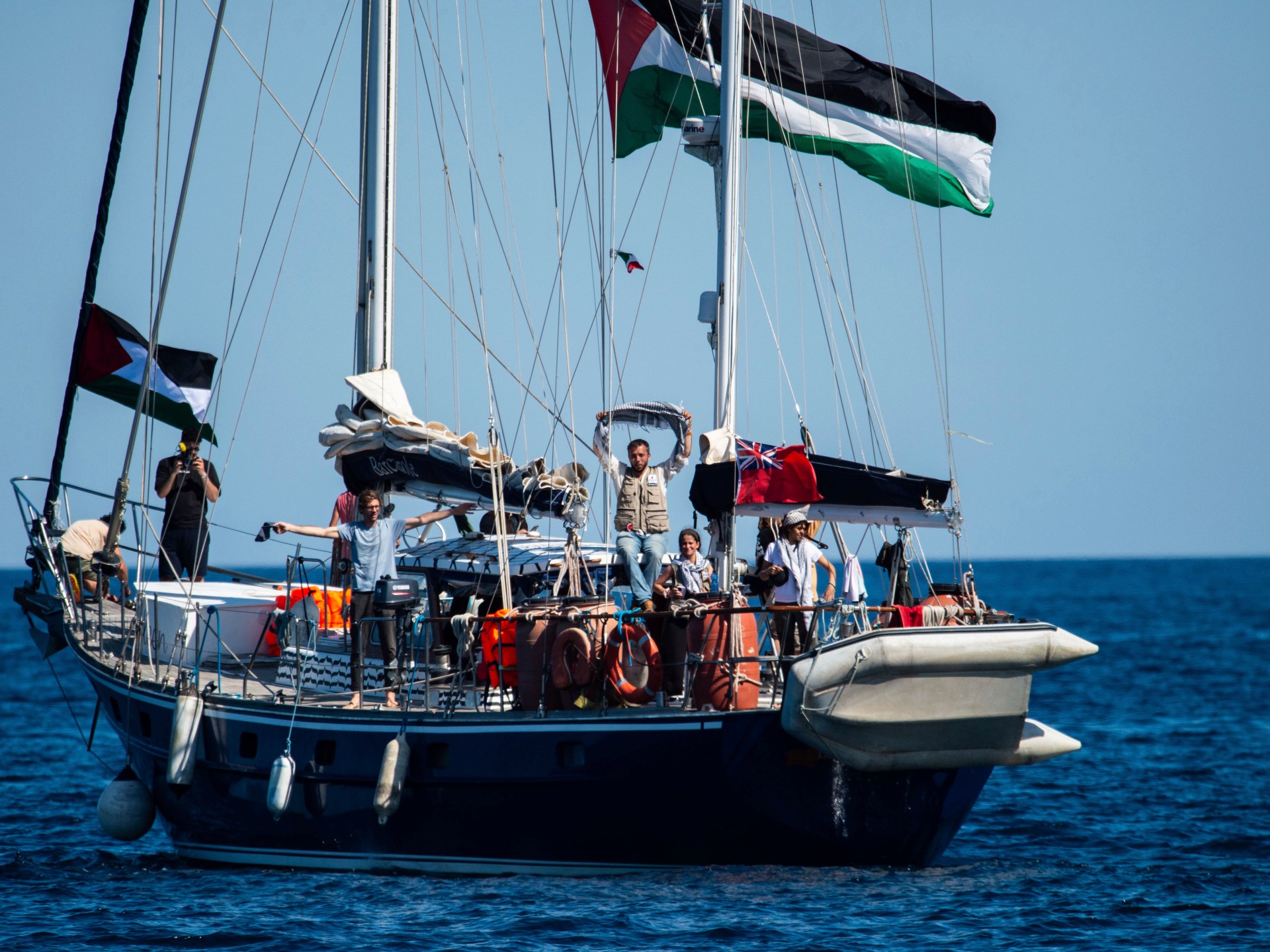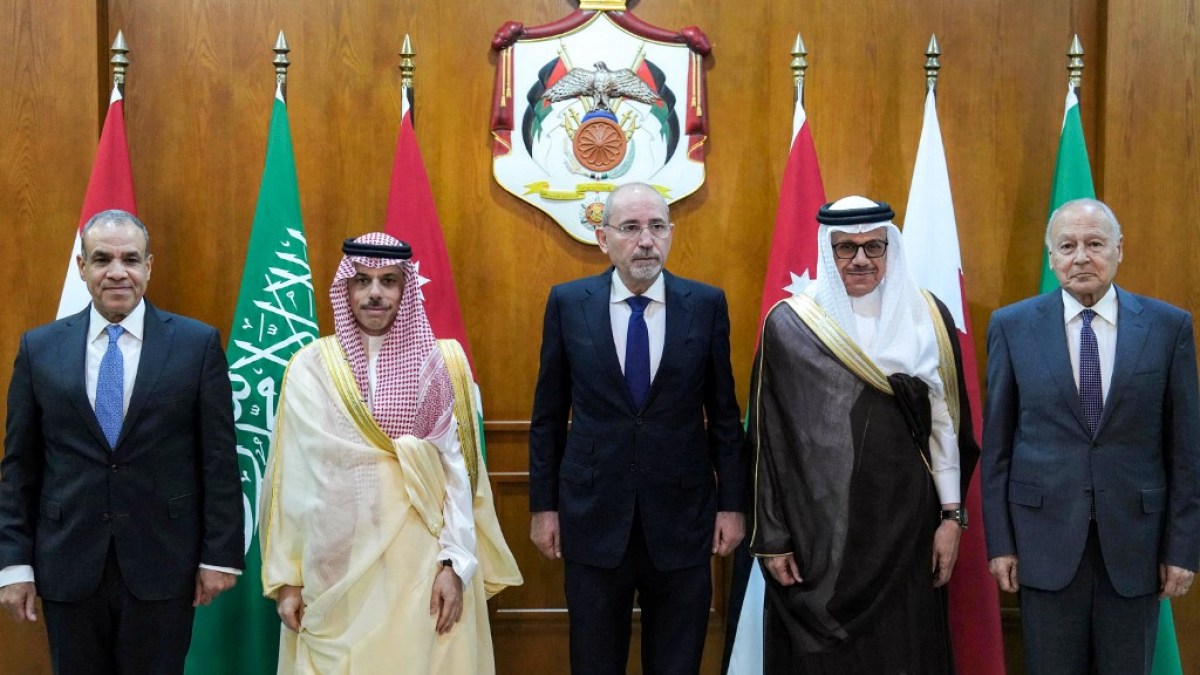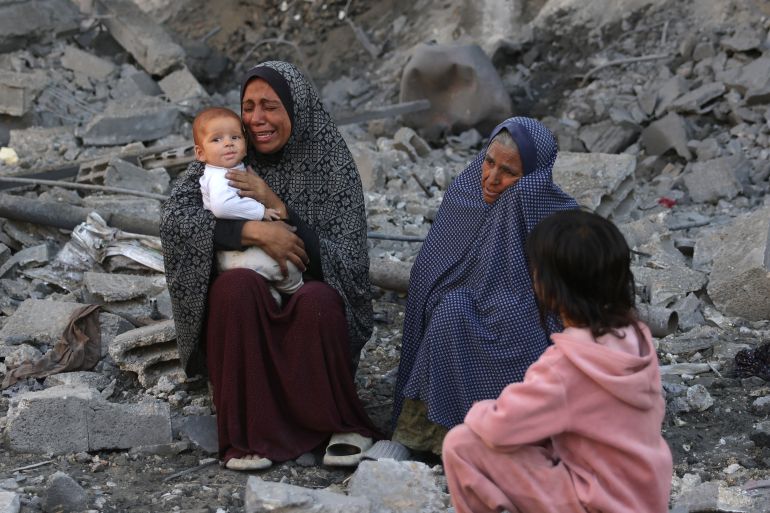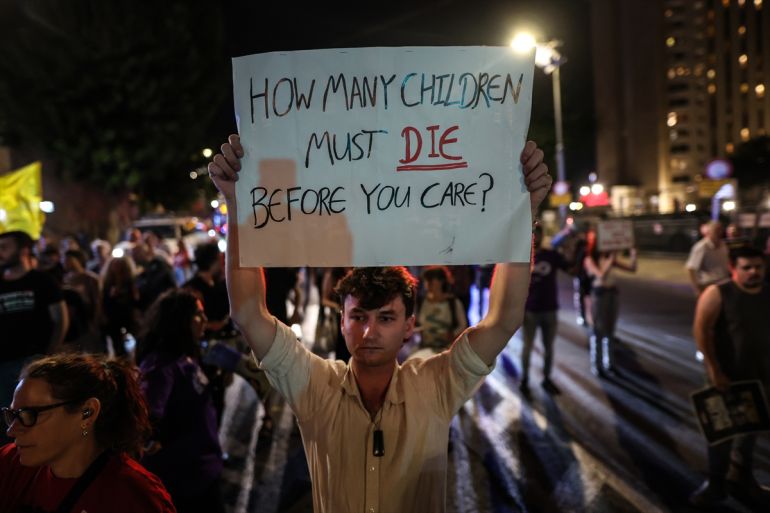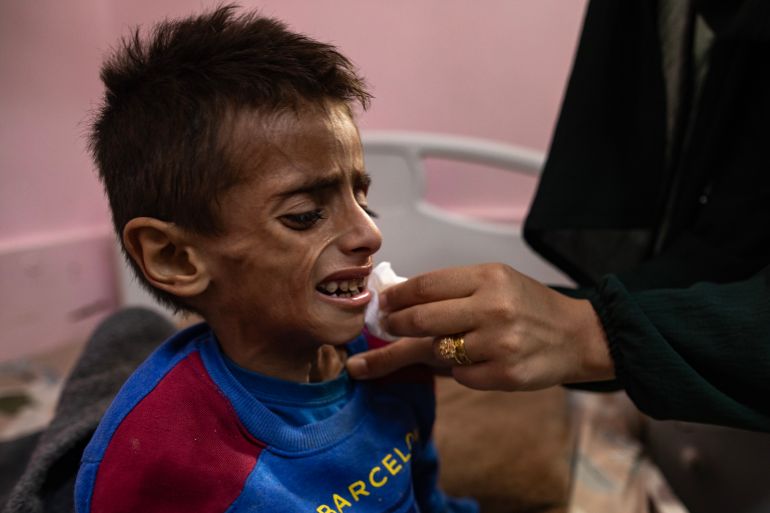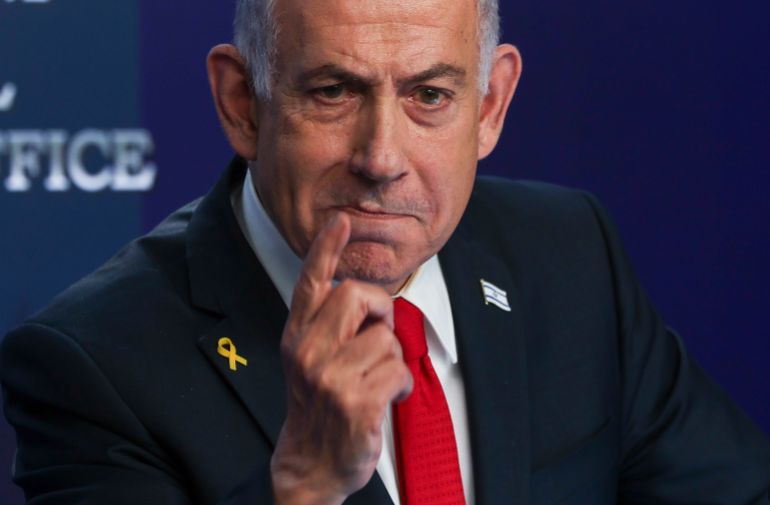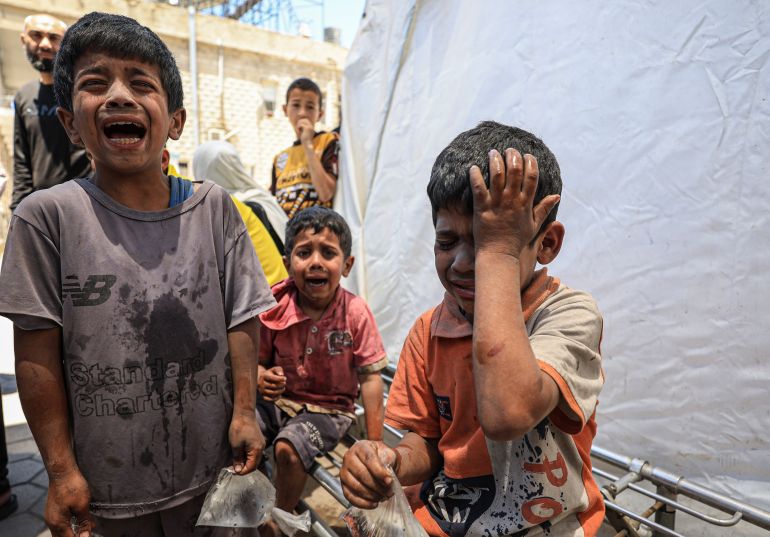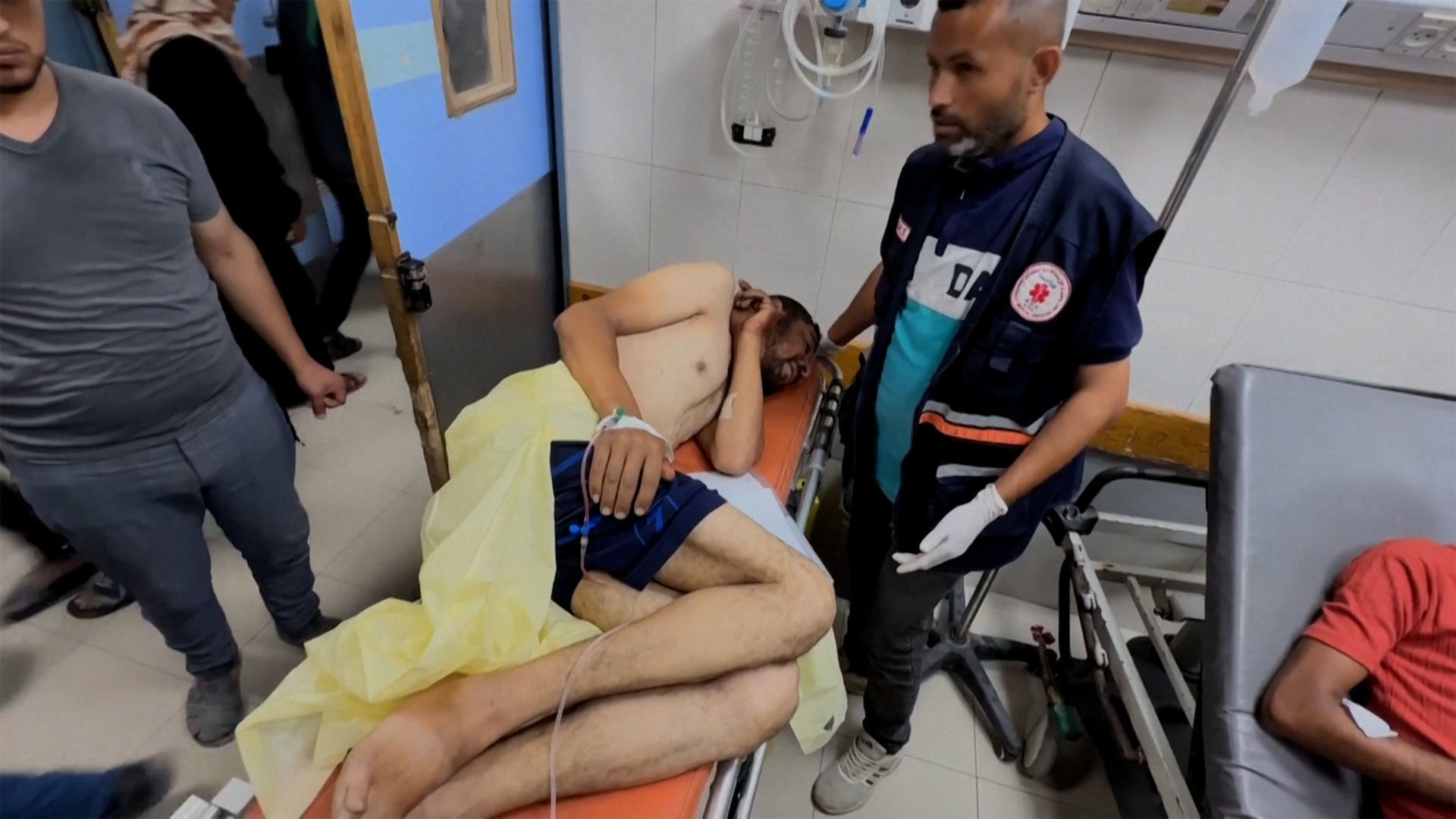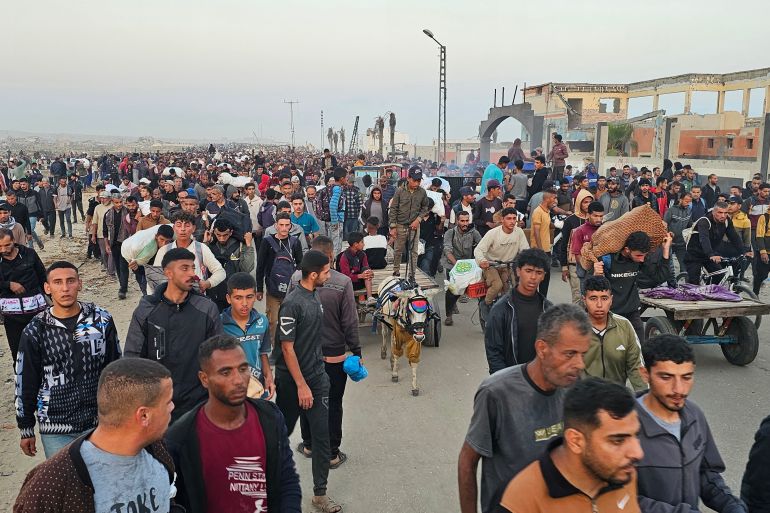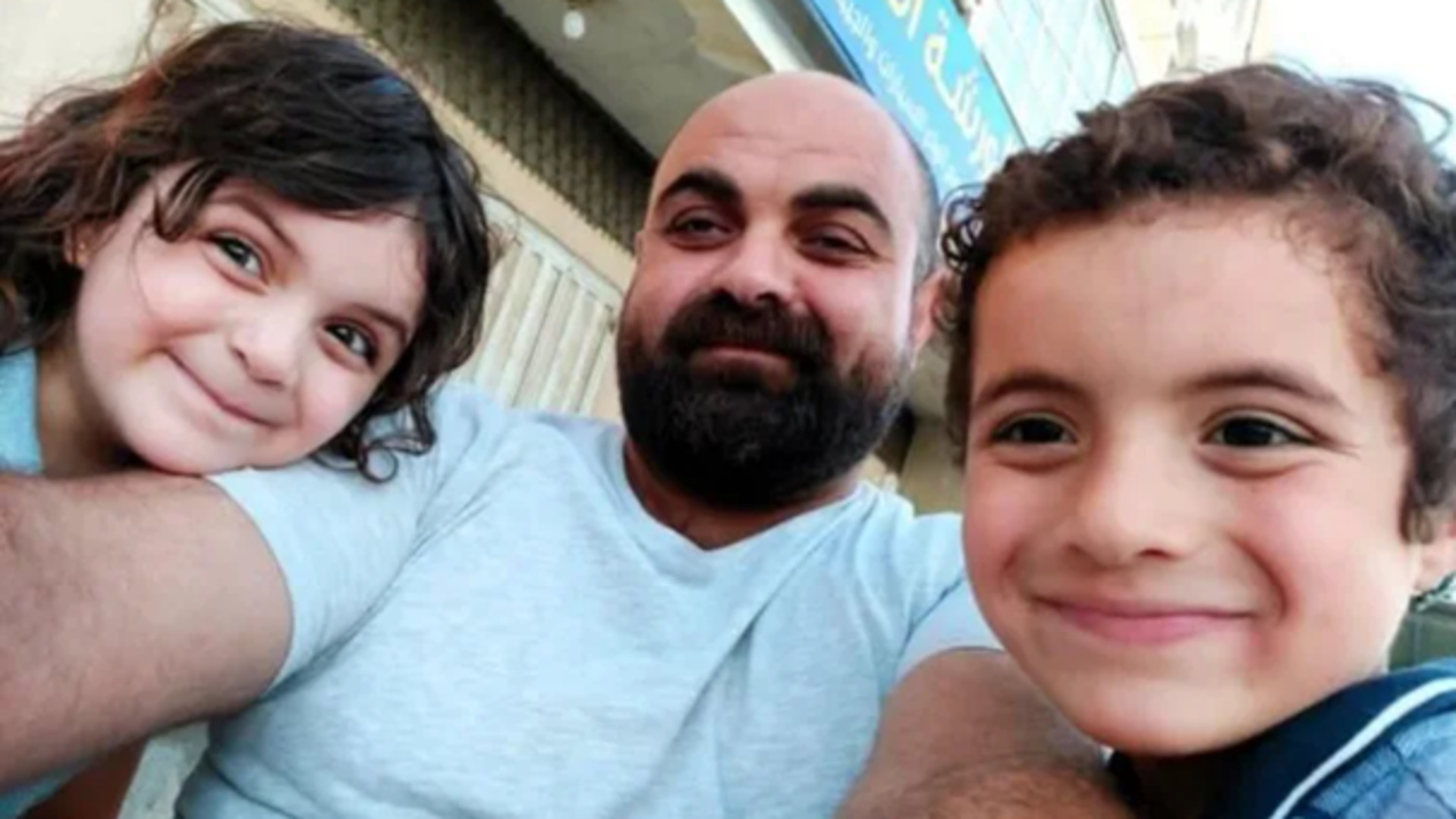Pro-Palestine protesters in UK call for Israel arms embargo, sanctions | Israel-Palestine conflict News
Rally is held as British PM Keir Starmer calls Israel’s actions ‘intolerable’, addressing lawmakers in Parliament.
Pro-Palestine campaigners have rallied against Israel’s punishing war on Gaza, gathering outside the British Parliament in London and demanding a full arms embargo and that hard-hitting sanctions be imposed on the Israeli government.
Wednesday’s march, organised by the Palestine Solidarity Campaign (PSC), came as British Prime Minister Keir Starmer took weekly questions from parliamentarians.
Thousands of protesters created a “Red Line for Palestine”, wearing red while encircling the building.
Starmer told Parliament that Israel’s actions in the besieged and bombarded enclave are “appalling” and “intolerable”.
“It is right to describe these days as dark,” Starmer said. “We have strongly opposed the expansion of Israeli military operations, and settler violence, and the blocking of humanitarian aid.”
Starmer added that the UK has imposed sanctions, suspended free trade negotiations, and is currently considering further sanctions.
But the UK leader, his Foreign Secretary David Lammy, and his government have come under heavy criticism in the UK for not speaking more forcefully backed by actual action earlier in the war, and for not doing enough now as Palestinians face what United Nations Secretary-General Antonio Guterres has called the “cruellest phase of this cruel conflict”.
Al Jazeera’s Rory Challands, reporting from London, said the protest went on for several hours and throughout Starmer’s entire speech to Parliament.

“There was a red line around the whole of Parliament,” Challands said.
“These protesters had formed a cordon, essentially all the way down from Parliament to the first bridge … that goes across to the other side of the [River] Thames, and they came back up … and returned over Westminster Bridge to join up here to make a full loop,” he added.
According to Challands, protesters say that their “red line” is to show that the UK government should have its own red lines when it comes to Gaza.
It has not had “sufficient” red lines in place, he said. “The protesters say there should have been red lines before 54,000 deaths.”
In his remarks, Starmer also called for an end to the siege and said humanitarian aid must reach Gaza quickly and in the required quantities.
Israel has maintained a crippling blockade on the territory, barring the entry of much-needed aid, including food, medicine, clean water, and fuel required by generators. A famine now looms as more than two million people are facing starvation, the UN has warned.
Meanwhile, a controversial, United States-backed group that runs aid distribution points in Gaza – the Gaza Humanitarian Foundation (GHF) – has suspended operations for a full day. The move came after Israeli forces opened fire at hungry aid seekers several times, killing dozens of Palestinians and injuring hundreds more since the organisation started operating in the enclave on May 27.
The killing of people desperately seeking food supplies has triggered mounting international outrage as many say aid is being weaponised and with the UN’s Guterres demanding an independent inquiry.
Israel’s war on Gaza has killed at least 54,607 Palestinians and wounded 125,341, according to the Health Ministry.

